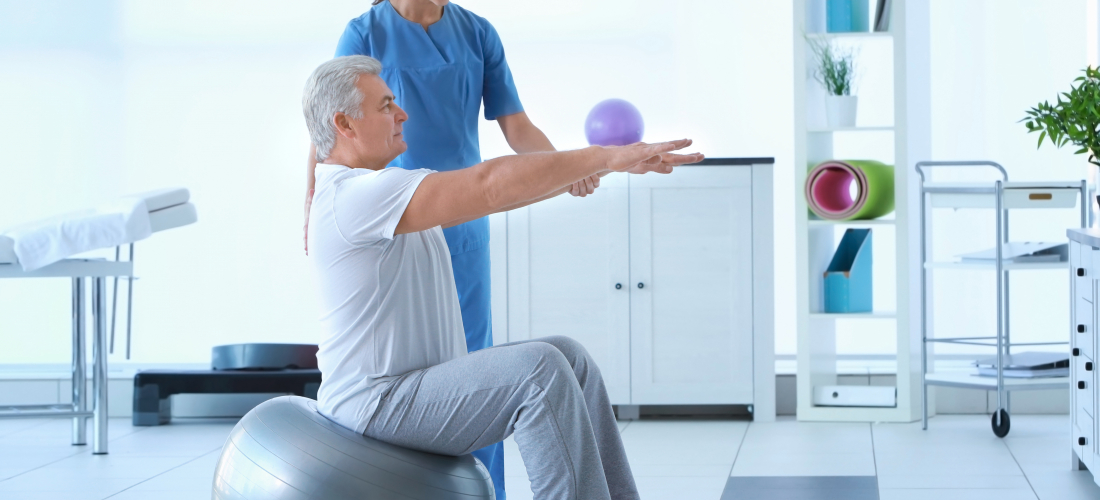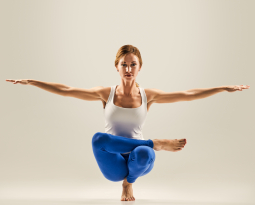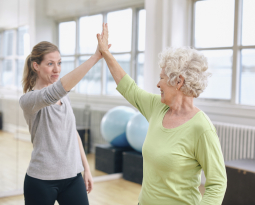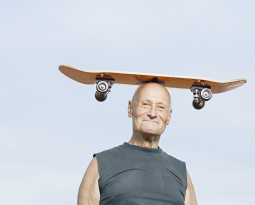
From Fallen to Fall-Proof
“I want to make a strong comeback from my hip replacement” said John on his initial visit. “I want to be able to go to Disneyland next spring and not worry about my hip.”
A memorable trip to Disneyland with the grandkids…that was John’s motivation. He knew he wasn’t in good shape and he already had anxiety about suffering another big fall at Disneyland while trying to keep up with his grandchildren.
John had just turned 74 and had already had his first hip replacement. This was a huge wakeup call driving him into the office for his initial visit. John was ready to make a lifestyle change. He was committed to going from “Fallen to Fall-Proof.”
***
Dealing with balance issues is a huge strain to the geriatric population. A strain that will only continue to get worse with time if not addressed.
According to the US Department of Health and Human Services, in 2013 the population of persons 65 years or older was 44.7 million, representing 14.1% of the U.S. population. By 2060, it is predicted that there will be about 98 million older persons.
The “Baby Boomers” generation is responsible for this growth in the aging population. The “Baby Boomers” are those individuals who were born between 1946 and 1964. They started turning 65 in 2011, and the number of older people in the US has been increasing ever since, and will continue to increase.
Balance training is a fundamental component of geriatric patient care. When elderly individuals lose their balance ability, they lose a high level of their independence as human beings. The Center for Disease Control claims, “falls in the elderly are costly.
- One out of five falls causes a serious injury such as broken bones or a head injury.
- Over 700,000 patients a year are hospitalized because of a fall injury, most often because of a head injury or hip fracture.
- More than 95% of hip fractures are caused by preventable falls, usually by falling sideways.
- Falls are the most common cause of traumatic brain injuries.
- Adjusted for inflation, the direct medical costs for fall injuries are $34 billion annually, with hospital costs accounting for two-thirds of the total.
Balance is achieved through an interaction of central anticipatory and reflexive actions as well as the active and passive restraints imposed by the muscular system. The physiologic mechanisms controlling stability are complex, including the response of intrinsic factors such as muscle coordination and the vestibular response to extrinsic factors from the environment (Anderson & Behm, 2005). The primary systems involved in balance are the visual, vestibular, and somatosensory systems.
Balance-ability is also associated with patients’ confidence of their balance. Research demonstrates that decreased balance confidence of performing functional activities is associated with actual balance performance, duration of vestibular symptoms, general health related quality of life, and the presence of comorbid psychological and visual impairments. Understanding this relationship is important for patient care (Marchetti, et al. 2011).
***
There is a clear need for balance training for elderly patients, John is certainly not the only one. For patients like John who are coming into your practice, be sure to consider these 3 Fall-Proof Strategies to help your patients gain better balance and stability.
3 Fall-Proof Strategies
1) Postural Correction:
The first “Fall-Proof” strategy is postural correction. When geriatric patients, like John, present with a postural kyphosis and forward head posture they are pre-disposed to weak balance and less proprioception. Postural distortion patterns can be determined from an initial posture evaluation with Posture Imaging.
To correct postural distortion patterns utilize the American Posture Institute’s 3-component system of correction: Spinal Alignment, Posture Rehabilitation, and Posture Habit Re-Education. The combination of these three components will ensure postural correction for your patients.
2) Perform One-Leg Balance:
One-Leg Balance is the best “Fall Proof” balance exercise to have your patients perform (not just geriatric patients, they can perform this at any age). The goal is that the patient will develop strong stability and be able to balance on one leg for 30 seconds with proper posture.
Have them perform this exercise in front of a mirror to ensure that their posture is correct while performing the balance exercise. If they have weak balance in the beginning like John did, have them start with their hand against the wall. If they need to hold on with two hands they can put one hand on the wall and the other on a chair.
3) Build Balance Confidence:
The third “Fall-Proof” strategy is to focus on your patients’ confidence. If they have suffered a previous fall of if they present with vestibular dysfunction, they likely will have anxiety about falling in public. John already had anxiety about going Disneyland, a trip that was a couple of months away.
To help your patients build confidence, have them perform mindful visualizations. To become more mindful of their bodies have them close their eyes, perform deep diaphragmatic breaths while drawing mindful attention to each aspect of their body. Then have them visualize walking with proper posture and fluid, balanced movements. Have them visualize scenes that would otherwise make them anxious.
Not only does this activity have a good calming effect of the body, but it is effective for improving confidence in balance. This is an important component of balance that is commonly overlooked by practitioners.
References:
Anderson, K & Behm, D. (2005) The Impact of Instability Resistance Training on Balance and Stability. Sports Med, 35 (1) p. 43-53.
Marchetti, G. et al. (2011) Factors Associated With Balance Confidence in Older Adults With Health Conditions Affecting the Balance Vestibular System. Arch Phys Med Rehabil, 92(11) p. 1884–1891.

















